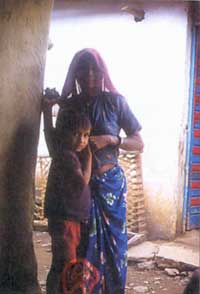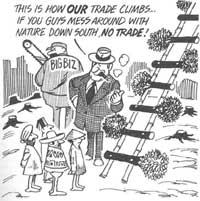<table border="0" cellpadding="0" cellspacing="0" width="210px">
<tbody>
<tr>
<td bgcolor="#363636" colspan="2" height="26px" style="color: rgb(255, 255, 255); font-size: 14px; padding-left:5px;">
Editor's Pick</td>
</tr>
</tbody>
</table>
<p><iframe frameborder="0" height="380" marginheight="0" marginwidth="0" scrolling="no" src="http://www.indiaenvironmentportal.org.in/files/country/nepal/nepal_iframe.htm" style="border-width:0px; border-color:#333; background:#FFF; border-style:solid;" width="555"></iframe></p>
<hr />
<table border="0" cellpadding="0" cellspacing="0" width="210px">
<tbody>
<tr>
<td bgcolor="#363636" colspan="2" height="26px" style="color: rgb(255, 255, 255); font-size: 14px; padding-left:5px;">
Country Overview</td>
</tr>
</tbody>
</table>
<p><object align="right" height="248" hspace="1" vspace="1" width="330"><param name="quality" value="high" /><param name="wmode" value="opaque" /><param name="scale" value="showall" /><param name="flashvars" value="offsite=true&lang=en-us&page_show_url=%2Fphotos%2Fcsepictures%2Ftags%2Fnepal%2Fshow%2F&page_show_back_url=%2Fphotos%2Fcsepictures%2Ftags%2Fnepal%2F&user_id=40105063@N03&tags=nepal&jump_to=&start_index=" /><param name="movie" value="http://www.flickr.com/apps/slideshow/show.swf?v=121499" /><embed flashvars="offsite=true&lang=en-us&page_show_url=%2Fphotos%2Fcsepictures%2Ftags%2Fnepal%2Fshow%2F&page_show_back_url=%2Fphotos%2Fcsepictures%2Ftags%2Fnepal%2F&user_id=40105063@N03&tags=nepal&jump_to=&start_index=" height="248" hspace="1" quality="high" scale="showall" src="http://www.flickr.com/apps/slideshow/show.swf?v=121499" type="application/x-shockwave-flash" vspace="1" width="330" wmode="opaque"></embed></object></p>
<p>Renowned for its majestic Himalayas, Nepal is rich in its geographic, natural, and cultural diversity. Nepal is divided into three broad geographic areas: the mountain region, the hill region, and the Terai region. Moving from east to west, the three regions lie parallel as continuous ecological belts, and are bisected by the country’s river system. Nepal is a relatively small country, measuring roughly 650 kilometers long by 200 kilometers wide, with a total land mass of 147,181 square kilometers. Situated between two Asian giants – China and India – Nepal has been characterized as a “yam caught between two rocks”. Since it is a landlocked country, Nepal is heavily dependent on India for transit facilities and access to the sea (Bay of Bengal) for delivery of its goods, even those coming from China.</p>












